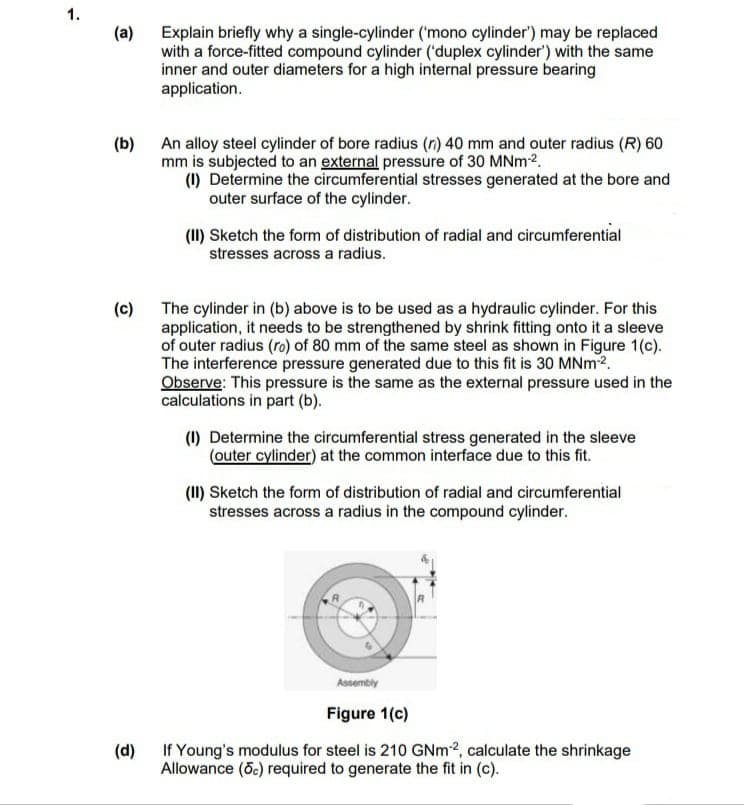(a) Explain briefly why a single-cylinder ('mono cylinder') may be replaced with a force-fitted compound cylinder ('duplex cylinder') with the same inner and outer diameters for a high internal pressure bearing application.
(a) Explain briefly why a single-cylinder ('mono cylinder') may be replaced with a force-fitted compound cylinder ('duplex cylinder') with the same inner and outer diameters for a high internal pressure bearing application.
International Edition---engineering Mechanics: Statics, 4th Edition
4th Edition
ISBN:9781305501607
Author:Andrew Pytel And Jaan Kiusalaas
Publisher:Andrew Pytel And Jaan Kiusalaas
Chapter4: Coplanar Equilibrium Analysis
Section: Chapter Questions
Problem 4.153P: Repeat Prob. 4.152 assuming that the 400-kN force is applied at O instead of L.
Related questions
Question

Transcribed Image Text:1.
(a)
Explain briefly why a single-cylinder ('mono cylinder') may be replaced
with a force-fitted compound cylinder ('duplex cylinder') with the same
inner and outer diameters for a high internal pressure bearing
application.
(b) An alloy steel cylinder of bore radius (n) 40 mm and outer radius (R) 60
mm is subjected to an external pressure of 30 MNM2.
(1) Determine the circumferential stresses generated at the bore and
outer surface of the cylinder.
(II) Sketch the form of distribution of radial and circumferential
stresses across a radius.
(c) The cylinder in (b) above is to be used as a hydraulic cylinder. For this
application, it needs to be strengthened by shrink fitting onto it a sleeve
of outer radius (ro) of 80 mm of the same steel as shown in Figure 1(c).
The interference pressure generated due to this fit is 30 MNM2.
Observe: This pressure is the same as the external pressure used in the
calculations in part (b).
(1) Determine the circumferential stress generated in the sleeve
(outer cylinder) at the common interface due to this fit.
(II) Sketch the form of distribution of radial and circumferential
stresses across a radius in the compound cylinder.
Assembly
Figure 1(c)
(d) If Young's modulus for steel is 210 GNM2, calculate the shrinkage
Allowance (6c) required to generate the fit in (c).
Expert Solution
This question has been solved!
Explore an expertly crafted, step-by-step solution for a thorough understanding of key concepts.
Step by step
Solved in 2 steps with 1 images

Knowledge Booster
Learn more about
Need a deep-dive on the concept behind this application? Look no further. Learn more about this topic, mechanical-engineering and related others by exploring similar questions and additional content below.Recommended textbooks for you

International Edition---engineering Mechanics: St…
Mechanical Engineering
ISBN:
9781305501607
Author:
Andrew Pytel And Jaan Kiusalaas
Publisher:
CENGAGE L

International Edition---engineering Mechanics: St…
Mechanical Engineering
ISBN:
9781305501607
Author:
Andrew Pytel And Jaan Kiusalaas
Publisher:
CENGAGE L